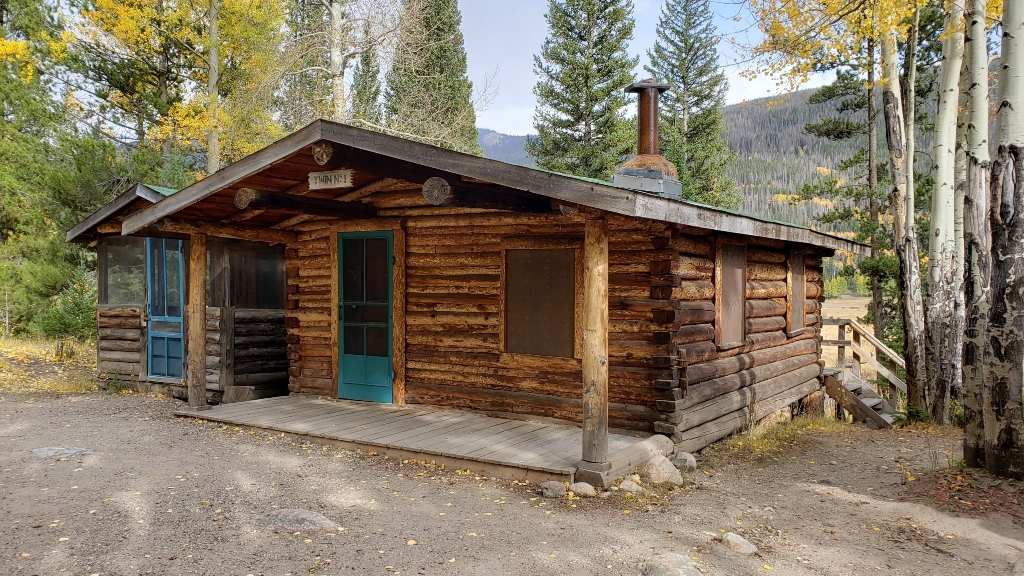
The Twin Cabins
The Twin Cabins (Twin 1 and Twin 2) were constructed to be the first permanent guest accommodations for the original Holzwarth Trout Lodge. Twin 1 was built by John Sr. and Johnnie in 1921 and Twin 2 was built by Johnnie alone in 1923. The Rose Cabin, which is adjoined to Twin 1, was constructed in 1945 as an addition. The park opens Twin 1 during the summer to visitors, to showcase some of the original furnishings.
The hospitality industry was not new to the Kawuneeche Valley at the time of the Holzwarth's arrival. The first was a mountain trekking outpost run by “Squeaky” Bob Wheeler, famous for hosting president Theodore Roosevelt in 1905 on a bighorn sheep hunt. Rearing livestock and growing crops ultimately proved to be an unsuccessful livelihood for homesteaders in the valley, so many relied on the natural appeal of the Rocky Mountains to create a thriving tourist industry. Which is similar to today.
Along with the Holzwarth Trout Lodge and Guest Ranch, there were other enterprises such as the Green Mountain (Schooners) Ranch, the Kawuneeche Ranch, and the Pontiac Lodge/ Montane Ranch, scattered across the valley from Grand Lake to the Little Yellowstone Canyon.
Over the years, the Holzwarth family had to adapt to tourists visiting the area, with interest gradually moving away from hunting and fishing to the “cowboy experience” provided by dude ranches. The Never Summer Ranch was a dude ranch that was established, built, and run by Johnnie from 1929 to the 1970s. The site had 14 buildings including barns and corrals, the Never Summer Lodge, guest cabins, and Johnnie’s home. Activities offered included campfires, trail rides, hikes, rodeo presentations, and more. After the overwhelming success of the dude ranch, the cabins of the original homestead were used as housekeeping cabins and spillover lodging from the 1950s onward.
Alongside the responsibilities of running the Lodge and the Ranch, the Holzwarth's also mastered a variety of skills required for successful living in the Rocky Mountains, using the flora and fauna of the surrounding environment.
Is there something we missed for this itinerary?
Itineraries across USA


















































